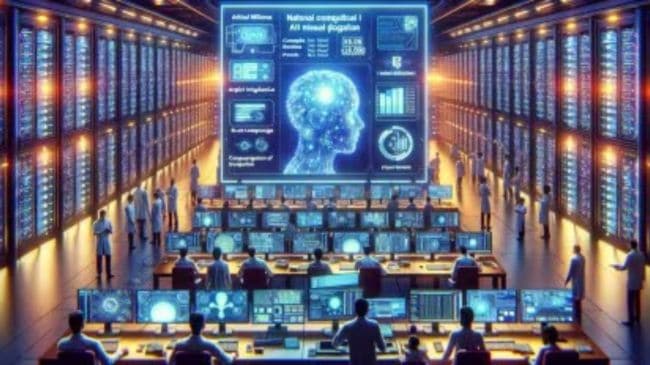Learn how SHAP (SHapley Additive exPlanations) can help interpret feature importance in neural networks. Understand what SHAP is, why feature importance is important, how SHAP works, and how to visualize feature importance with SHAP. Discover the limitations of SHAP and its applications in neural networks. Enhance your understanding of neural network decision-making with SHAP.
Neural networks are powerful machine learning models that can solve complex problems. However, understanding how they make decisions can be challenging, especially when trying to explain the importance of specific features. This is where SHAP (SHapley Additive exPlanations) comes into play. In this guide, we will explore how SHAP can help us understand feature importance in neural networks.
What is SHAP?
SHAP is a unified framework for interpreting the output of machine learning models. It provides a way to assign an importance value to each feature in a prediction. SHAP values are based on the concept of Shapley values from cooperative game theory. The idea behind SHAP is to distribute the prediction value across the features in a fair way.
Why is Feature Importance Important?
Understanding feature importance is crucial for several reasons. First and foremost, it helps us understand how a machine learning model is making decisions. By knowing which features are most important, we can gain insights into the underlying patterns and relationships in the data.
Furthermore, feature importance can aid in feature selection and feature engineering. If a certain feature has low importance, it may not be necessary to include it in the model, which can help simplify the model and improve its performance. On the other hand, if a feature has high importance, we may want to pay more attention to it and potentially gather more data or engineer new features based on it.
How Does SHAP Work?
SHAP uses a game-theoretic approach to determine feature importance. It considers all possible coalitions of features and evaluates how they contribute to the model’s output. The contributions are then combined to calculate the SHAP values.
One way to think about SHAP values is as the average marginal contribution of a feature across all possible coalitions. Each feature’s SHAP value represents its contribution to the prediction when considering all possible combinations of features.
Interpreting SHAP Values
SHAP values can be both positive and negative. A positive SHAP value indicates that a feature increases the prediction, while a negative SHAP value means that a feature decreases the prediction. The magnitude of the SHAP value indicates the strength of the contribution.
For example, let’s say we have a neural network model that predicts house prices based on various features such as square footage, number of bedrooms, and location. If the SHAP value for the square footage feature is positive, it means that an increase in square footage would result in a higher predicted house price. Conversely, if the SHAP value for the number of bedrooms is negative, it means that an increase in the number of bedrooms would lead to a lower predicted house price.
Visualizing Feature Importance with SHAP
One of the advantages of SHAP is that it provides intuitive visualizations of feature importance. These visualizations can help us understand the impact of each feature on the model’s predictions.
A popular visualization technique is the SHAP summary plot, which displays the SHAP values for all the features in a single plot. The features are sorted by their overall importance, with the most important features at the top. This plot allows us to quickly identify the features that have the most significant impact on the predictions.
Another useful visualization is the SHAP dependence plot, which shows how the value of a specific feature affects the model’s predictions. This plot can help us understand the direction and magnitude of the relationship between a feature and the prediction.
Using SHAP for Feature Importance in Neural Networks
Now that we understand the basics of SHAP and how it works, let’s see how we can use it to explain feature importance in neural networks.
The first step is to train a neural network model on our data. Once the model is trained, we can use the SHAP library to calculate the SHAP values for each feature.
Next, we can visualize the feature importance using the SHAP summary plot. This plot will give us an overview of the features that have the most significant impact on the predictions.
Additionally, we can use the SHAP dependence plot to explore the relationship between specific features and the model’s predictions. This can help us understand how the value of a feature affects the model’s output.
Limitations of SHAP
While SHAP is a powerful tool for interpreting feature importance in neural networks, it does have some limitations.
Firstly, calculating SHAP values can be computationally expensive, especially for large neural networks and datasets. This can limit its scalability for certain applications.
Secondly, SHAP values are specific to a given model and dataset. If we train a new model or use a different dataset, the feature importance may change.
Lastly, SHAP values provide a local interpretation of feature importance for a single prediction. They do not capture global patterns or relationships in the data.
Conclusion
Explaining feature importance in neural networks is essential for understanding how these models make decisions. SHAP provides a powerful framework for interpreting feature importance by assigning SHAP values to each feature. These values help us understand the impact of individual features on the model’s predictions.
By visualizing feature importance with SHAP, we can gain valuable insights into the inner workings of neural networks. This understanding can guide feature selection, feature engineering, and ultimately improve the performance of our models.
Despite its limitations, SHAP is a valuable tool for explaining feature importance and enhancing the interpretability of neural networks.









Leave a Reply